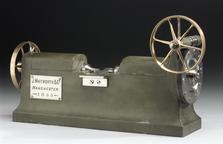

Dividing engine for making sextants and octants
- Made:
- Made late 1700s, modified 1800s in England







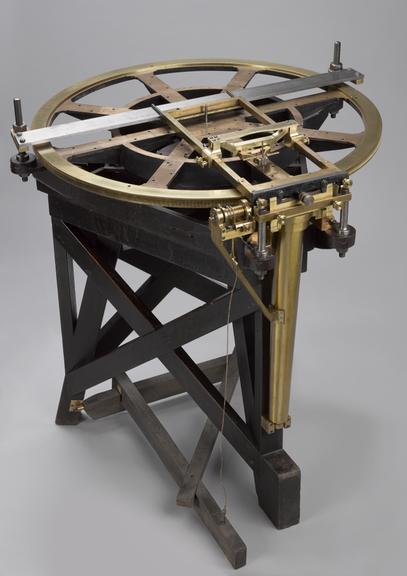
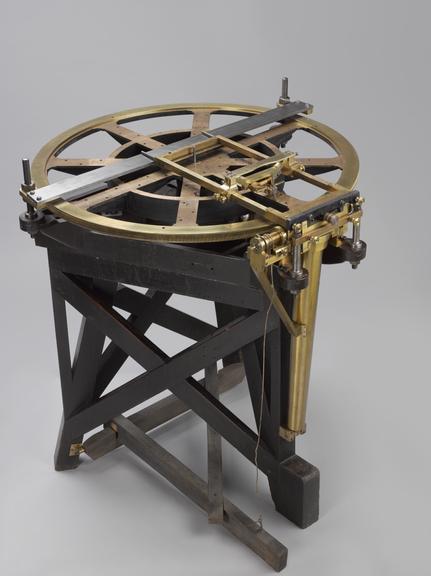
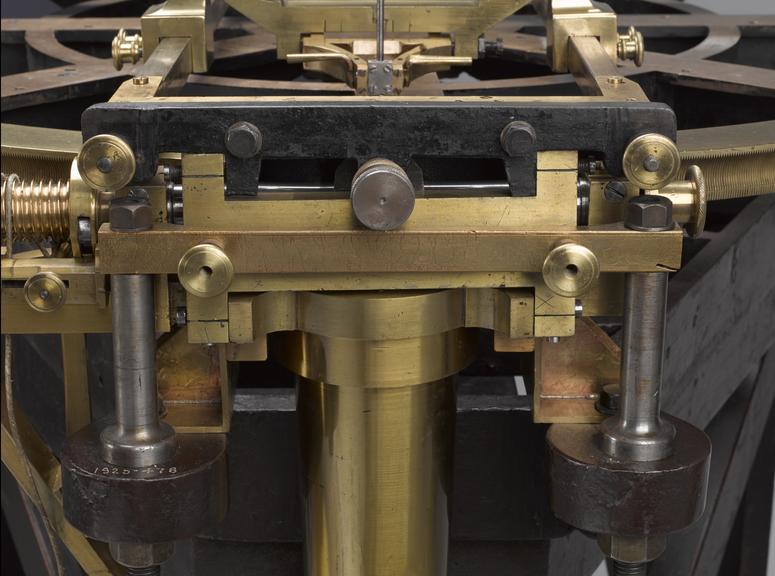
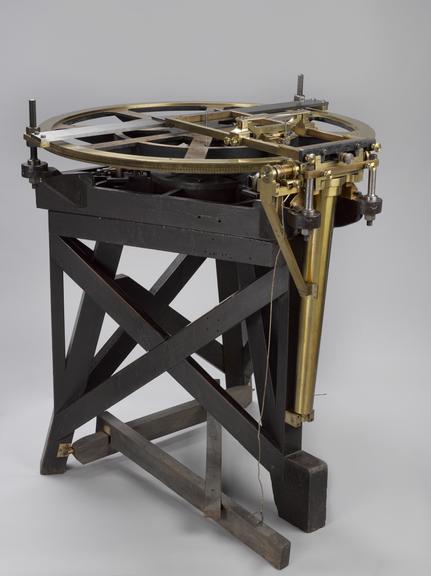
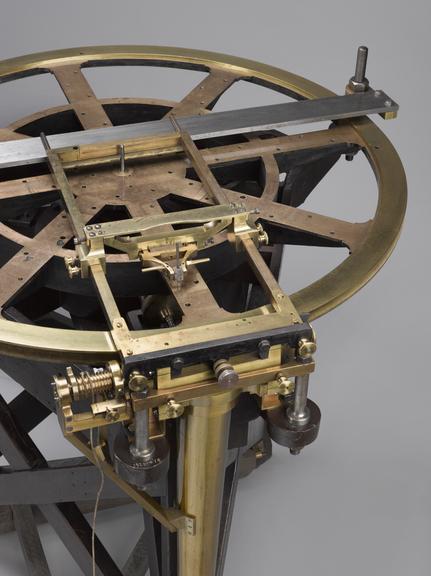
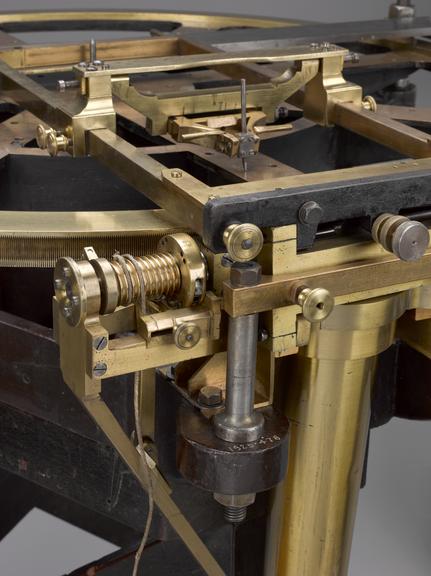
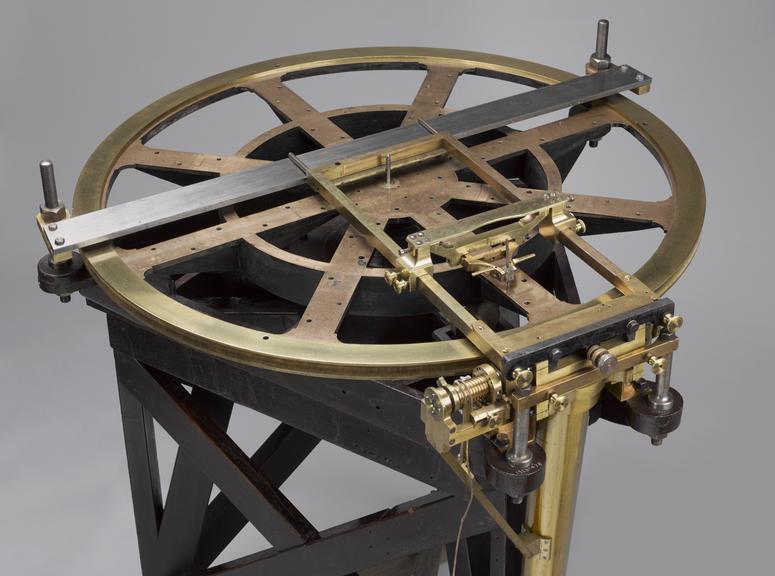
Dividing engine for the manufacture of small scientific instruments such as sextants and octants, made in England, late eighteenth century with nineteenth-century modifications. The cast brass 37 5/8-inch dividing plate is supported on three rollers with a heavy cast metal frame on a large wooden tripod. The general design is similar to Jesse Ramsden’s original dividing engine. This engine was used c.1883-1953 by the firm A. J. Bennett and Co Ltd. (founded by Albert Josiah Bennett), Walworth Road, London, England.
Dividing engines partially mechanised the process of dividing scales for small instruments, helping to meet growing demand from navigators. A sextant or octant was fixed to the top of the engine, and angular divisions were marked on it using the engine’s precision screw and a ratchet. Instrument-maker Jesse Ramsden constructed the first such engine in London in 1767, later reluctantly sharing its design with other makers at the request of the government’s Board of Longitude.
Details
- Category:
- Industrial Metrology
- Object Number:
- 1925-478
- Materials:
- brass (copper, zinc alloy), steel (metal), oak (wood), mahogany (wood), metal (unknown) and catgut
- Measurements:
-
overall: 1160 mm x 1150 mm x 1150 mm, 193 kg
- type:
- circular dividing engine
- credit:
- Bennett, Albert Josiah



